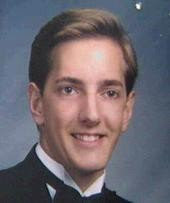Courtesy of NHL.com
With the 2010 Winter Olympics right around the corner, there's no better time for the United States Hockey Hall of Fame selection committee to announce its star-studded Hall of Fame Class for 2009.
This year's inductees, made official Tuesday, include the 1998 women's Olympic hockey team, former U.S. Olympic medalists John LeClair, Tony Amonte and Tom Barrasso and inventor Frank Zamboni, who'll be inducted posthumously.
The U.S. women's ice hockey team, coached by Ben Smith, won the sport's inaugural Olympic gold medal by going undefeated and twice beating the favored Canadians. The women's team will join the 1960 and 1980 men's Olympic teams as the only groups to be enshrined into the U.S. Hockey Hall of Fame.
Cammi Granato, captain of that '98 U.S. Team in Nagano, Japan, was inducted into the U.S. Hockey Hall of Fame last year. Behind Granato's 4 goals and 4 assists in six games, the Americans earned the gold while outscoring the opposition, 36-8. The United States would defeat Canada, 3-1, in the gold-medal game on Feb. 17, 1998.
"I've never been on a team where everyone realized their role and sort of gave up their pride and said, 'OK, I'm not on the power play, but can handle it and I'll do my job the best I can,' and that's difficult to find," Granato said of her '98 Olympic teammates. "We hadn't won a world championship previously and were completely dominated by Canada, more psychologically speaking than anything else. So how were we going to beat them on the biggest stage ever? As one of the leaders of the team, that's what I had to figure out and we worked really hard at that. When you get that recipe, it often leads to something great and you could feel that building within our team."
LeClair, Amonte and Barrasso were teammates on the silver-medal winning men's team at the 2002 Games in Salt Lake City.
"We hadn't won a world championship previously and were completely dominated by Canada, more psychologically speaking than anything else. So how were we going to beat them on the biggest stage ever? As one of the leaders of the team, that's what I had to figure out and we worked really hard at that. When you get that recipe, it often leads to something great and you could feel that building within our team."
-- Cammi Granato, captain of the 1998 U.S. Women's Ice Hockey Team
LeClair, of St. Albans, Vt., became the first American-born NHL player to post three consecutive 50-goal seasons -- all with the Philadelphia Flyers. He played for the Flyers for 10 seasons, totaling 333 goals, and finished his 17-season NHL career with 406 goals in 967 games. He represented the United States in the 1998 Olympics, '96 World Cup and the '88 and '89 World Junior Championships.
LeClair finished second in scoring among all players in the '96 World Cup, helping the Americans to a memorable performance with 6 goals and 10 points in seven games. He was also part of the "Divine Line" at the '02 Winter Olympics, skating alongside Brett Hull and Mike Modano -- the highest-scoring trio (9 goals, 21 points in 6 games) in the tournament. He was drafted 33rd by the Canadiens in 1987 and would win a Stanley Cup in Montreal in 1993. LeClair spent his final two seasons in Pittsburgh.
Six-time NHL All-Star Amonte played for Team USA in the 1998 Olympics, the '96 World Cup, the '91 and '93 World Championships, the '90 Goodwill Games and the '89 and '90 World Junior Championships. The Hingham, Mass., native scored the game-winner for Team USA in the decisive third game of the best-of-three championship series against Canada in the '96 World Cup.
Drafted 68th in 1988 by the New York Rangers, Amonte placed third in the balloting for the Calder Trophy in 1991-92 after scoring 35 goals and 69 points. Following three seasons with the Rangers, Amonte was traded to Chicago where he scored at least 30 goals five times. He also had a string of playing in all 82 regular-season games five straight seasons (1997-98 through 2001-02) with the Blackhawks. Amonte played for five teams -- the Rangers, Blackhawks, Phoenix Coyotes, Flyers and Calgary Flames -- before retiring in 2008 with 416 goals and 900 points in 1,174 NHL games.
Boston native Barrasso, the first American-born goalie to reach 300 wins, was originally drafted fifth by the Buffalo Sabres out of Acton-Boxborough High School in the 1983 Entry Draft -- at the time the highest a goalie had ever been selected at the draft.
Barrasso made his NHL debut with the Sabres straight out of high school the following season, going 26-12-3 with a 2.84 goals-against average to win the Calder Trophy as the NHL's top rookie and the Vezina Trophy as the League's top goalie. He represented the United States at the 1984 and '87 Canada Cups and the '86 IIHF World Championship. Barrasso retired in 2003 after an 18-year NHL career, during which he played for the Buffalo Sabres, Pittsburgh Penguins, Ottawa Senators, Carolina Hurricanes, Toronto Maple Leafs and St. Louis Blues. He compiled a career regular-season record of 369-277-86, with a 3.24 goals-against average and 38 shutouts in 777 career NHL games.
It was in 1949 that Zamboni, born in Eureka, Utah, invented the first self-propelled ice resurfacing machine that you now see at every hockey rink throughout the world. He did this by modifying a tractor -- adding a blade that shaved the ice smooth, swept up the shavings into a tank and rinsed the ice while leaving a very thin layer of water. The Zamboni family maintained the business following Frank's death at the age of 87 in 1988. The company has plants in Los Angeles, Ontario and Switzerland.
Subscribe to:
Post Comments (Atom)

No comments:
Post a Comment